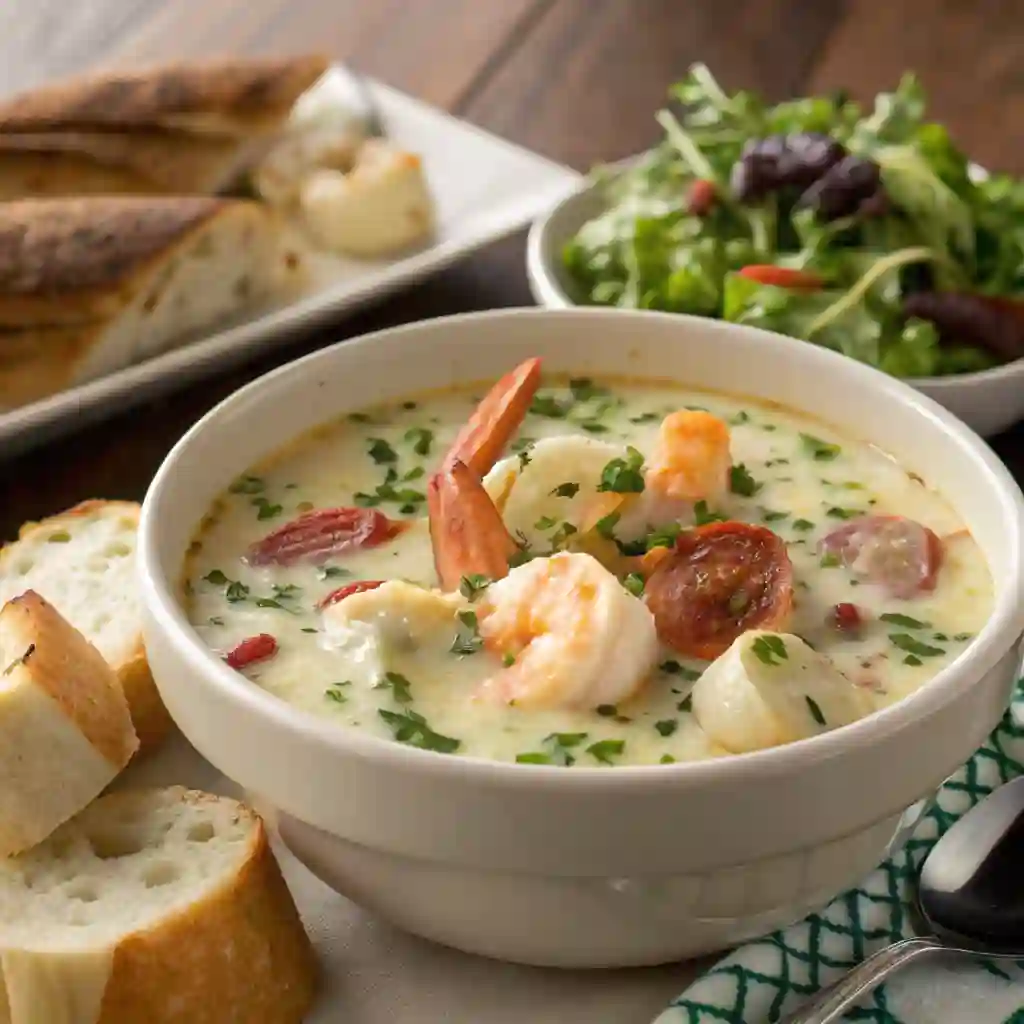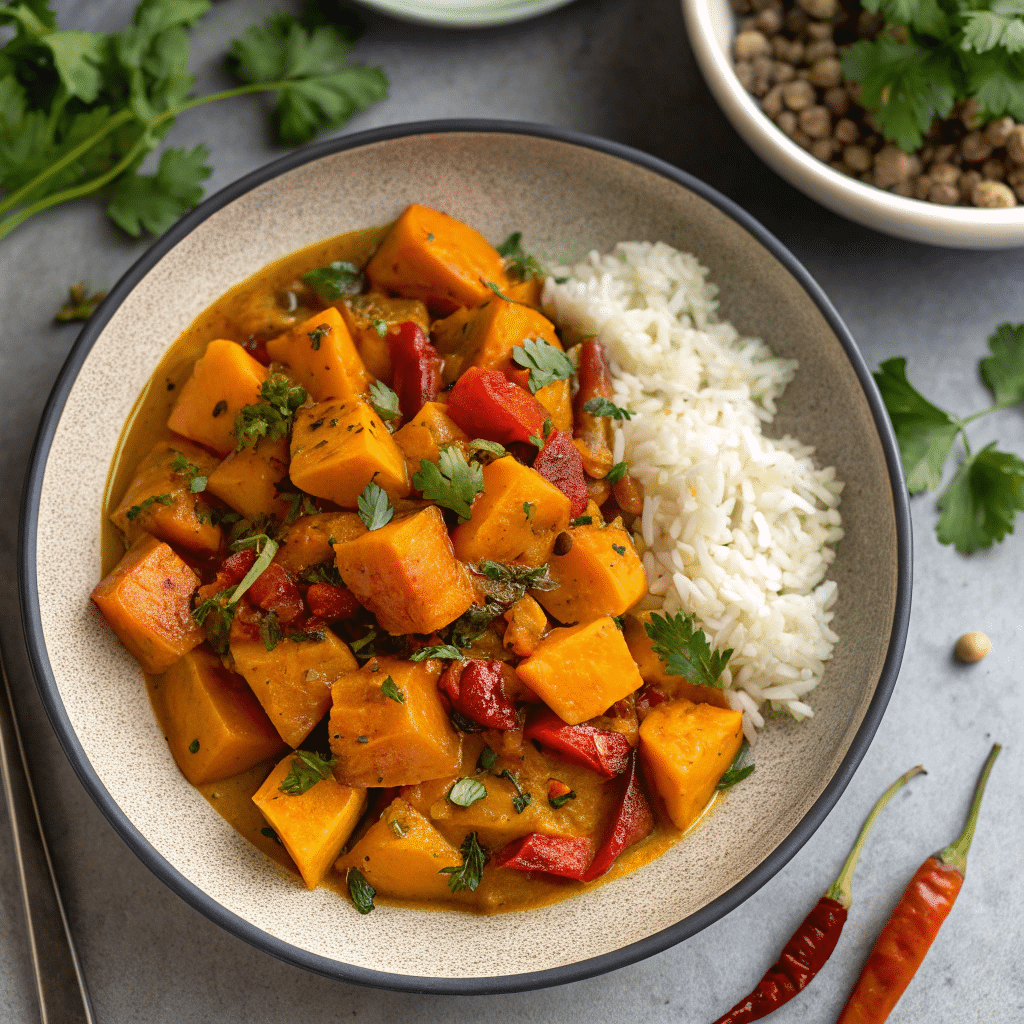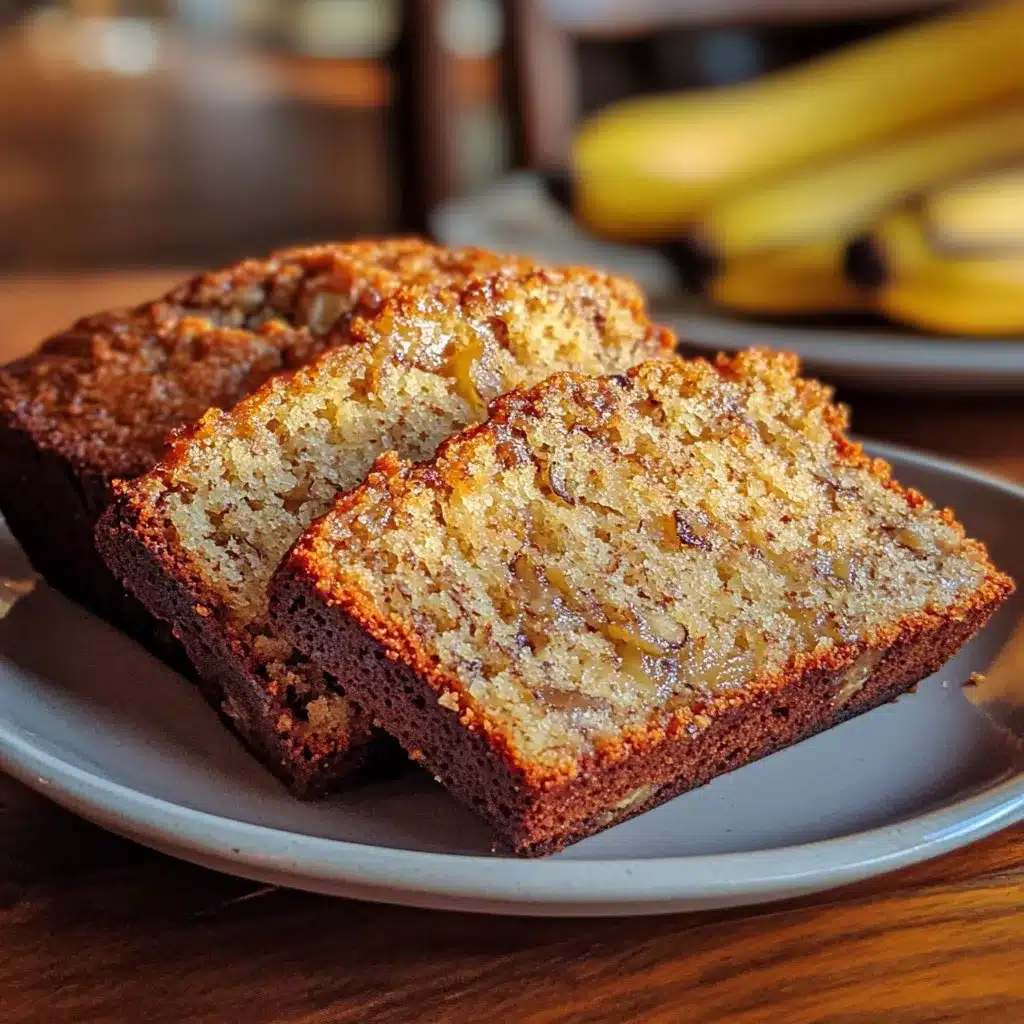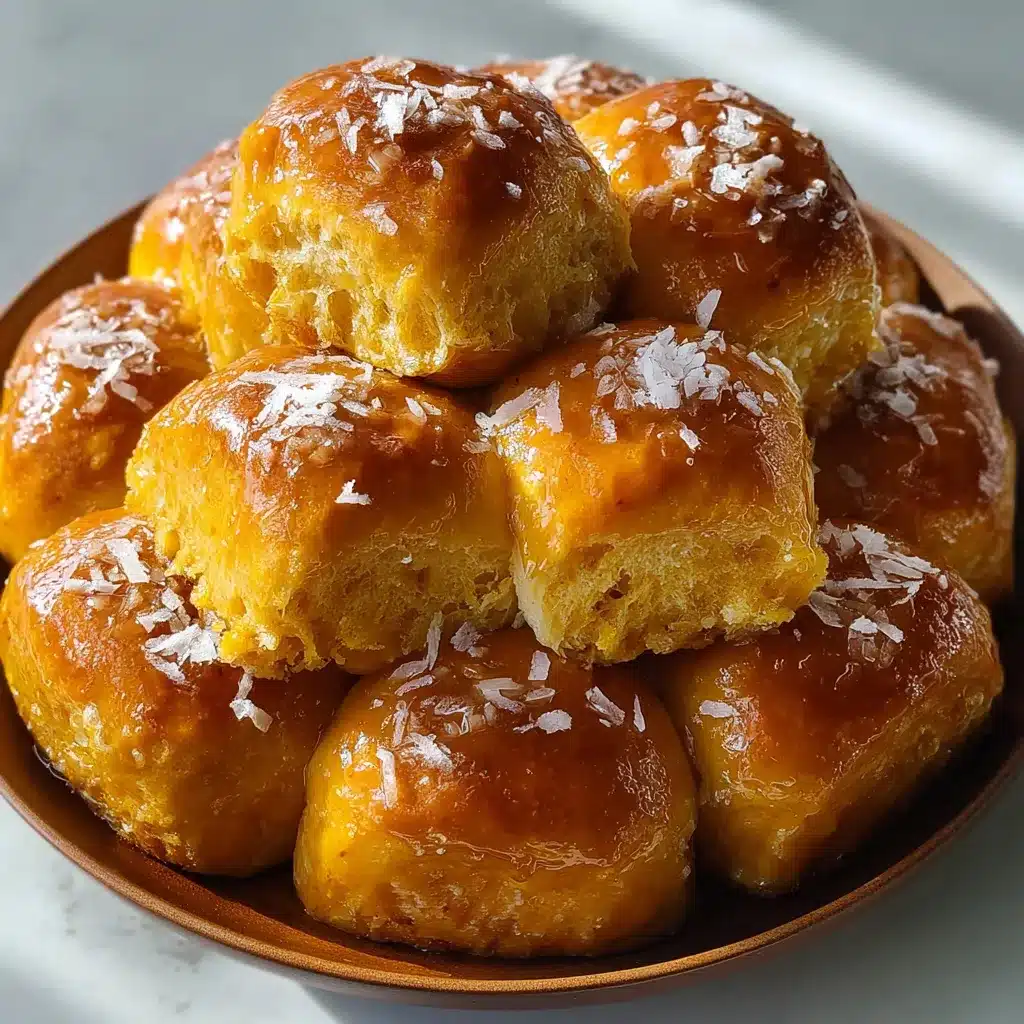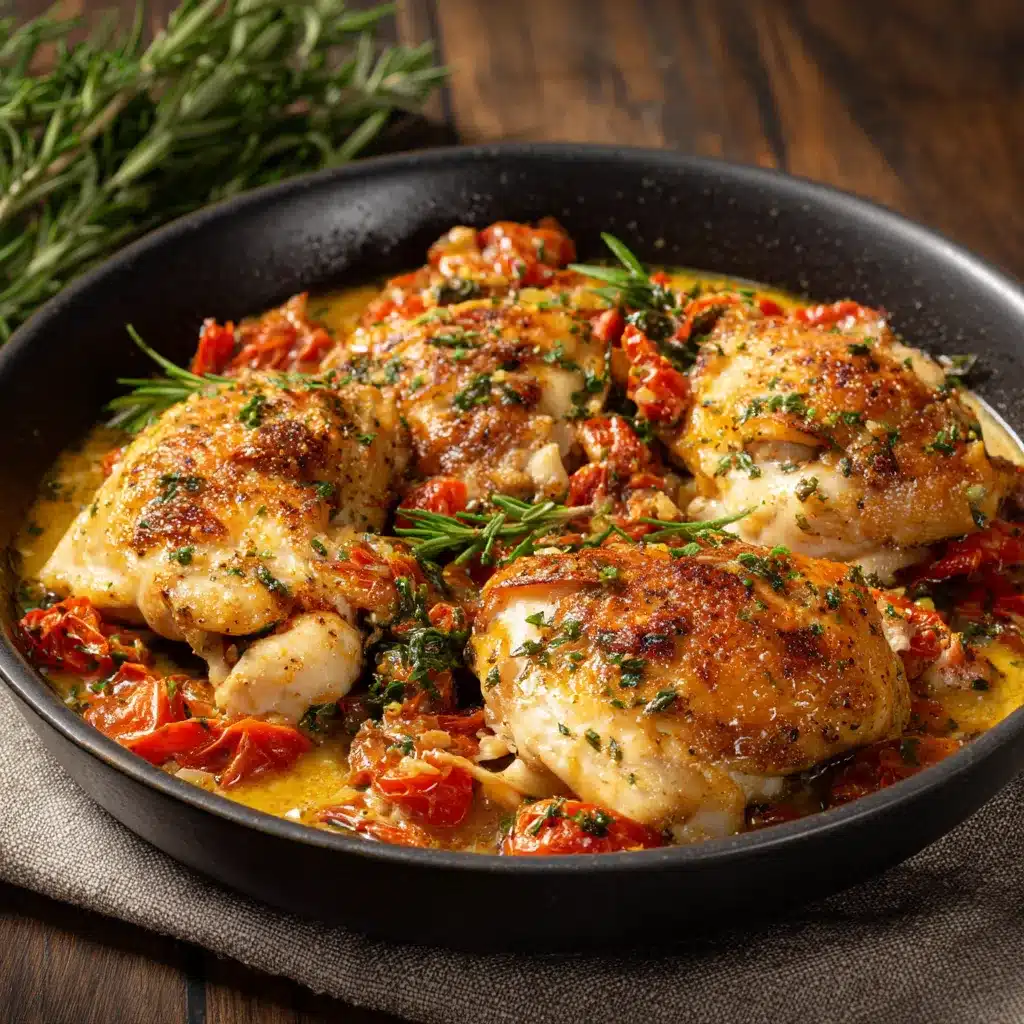Seafood chowder is the ultimate comfort food, offering a rich, creamy texture filled with succulent seafood and savory flavors. This dish is loved by many for its warm and satisfying nature, making it perfect for a cozy evening or a special family meal. Whether you prefer the classic New England style or enjoy exploring regional variations, there’s a seafood chowder recipe for everyone.
In this article, we’ll dive into the world of seafood chowder, from understanding what it is to discovering the best ways to prepare it. We’ll explore different types of chowder, the essential ingredients, and provide helpful tips on making the perfect seafood . We’ll also discuss toppings, side dishes, storage tips, and health benefits, along with answering common questions to help you master this delicious dish.
So, let’s start with the basics and explore what makes seafood chowder such a beloved dish!
Table of Contents
What is Seafood Chowder?
A Comforting Classic: The Essence of Seafood Chowder Recipe
At its core, seafood chowder is a hearty, creamy soup made with a variety of seafood, vegetables, and seasonings. It’s a dish that has evolved over centuries, originally rooted in New England, where it was made by fishermen who would combine their fresh catch with simple, local ingredients like potatoes, onions, and cream. Over time, seafood became a beloved comfort food, cherished for its rich, velvety texture and satisfying taste.
Chowder, as a whole, is known for its thick, creamy consistency. Unlike traditional soups, which are typically more liquid, chowders are thickened with either flour, cornstarch, or cream. The result is a luscious, spoonable dish that feels indulgent without being too heavy. the creaminess pairs perfectly with the delicate flavor of the seafood, creating a balance that is nothing short of comforting.
Key Ingredients in Seafood Chowder Recipe
The base of any great seafood chowder is its ingredients. The essential components include fresh seafood such as shrimp, clams, and fish, along with a creamy mixture of dairy products like milk and heavy cream. A well-made seafood chowder also often includes vegetables like onions, celery, carrots, and potatoes, which help to add texture and a bit of sweetness.
While these ingredients are considered traditional, there’s always room for creativity in the kitchen. Many recipes also incorporate bacon or other types of shellfish, such as lobster, to add additional flavor and richness. The seasoning is key too – fresh herbs, garlic, thyme, and bay leaves are commonly used to bring the flavors together.
So, whether you’re making a traditional recipe or getting a little creative, seafood chowder offers endless possibilities for customization.
Types of Seafood Chowder Recipe
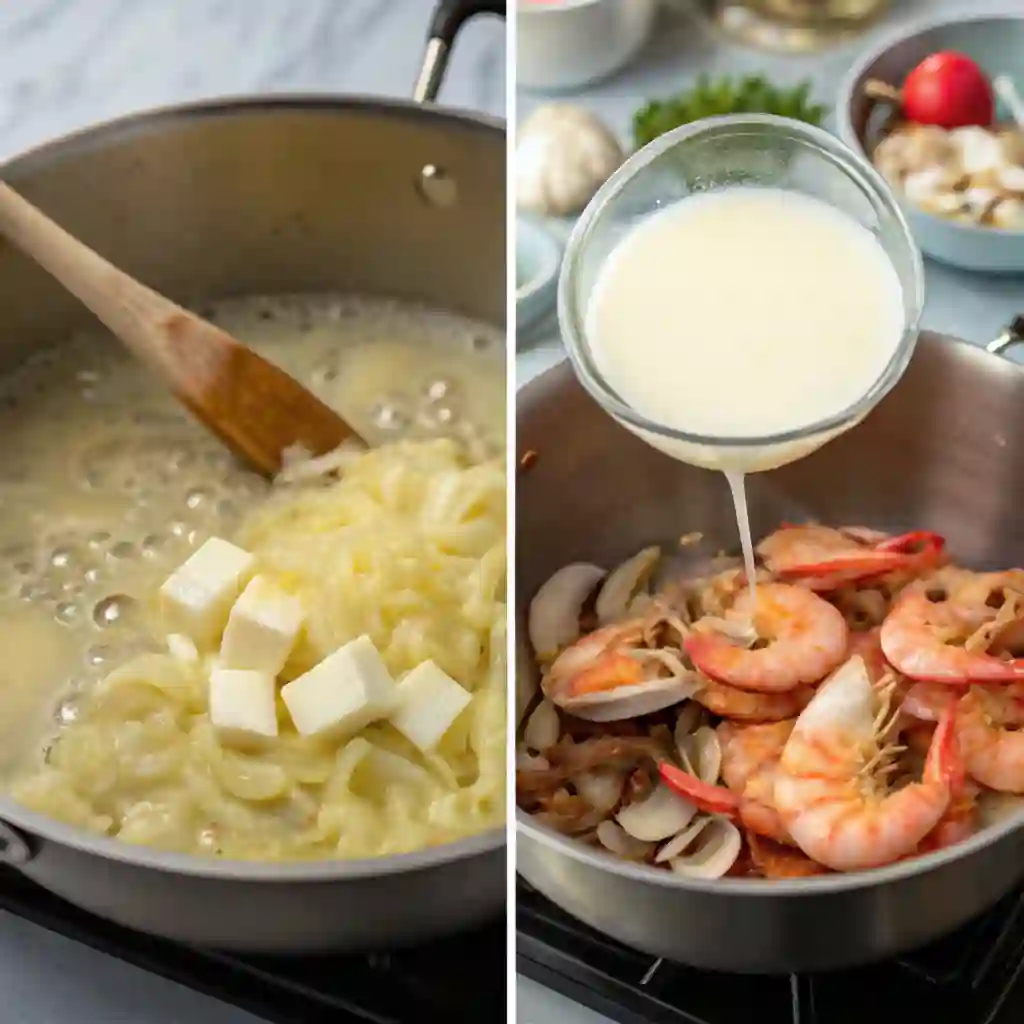
New England vs. Manhattan Seafood Chowder Recipe
When you think of seafood chowder, chances are you’re picturing the famous New England version. This classic chowder is rich and creamy, often made with a base of heavy cream or milk. The star ingredients are usually tender clams, shrimp, or fish, along with a few simple vegetables like potatoes and onions. The result? A comforting, creamy dish that’s perfect for chilly evenings.
On the other hand, the Manhattan seafood chowder offers a completely different experience. Unlike its creamy counterpart, Manhattan chowder is made with a tomato-based broth, giving it a lighter and tangier flavor. While still packed with seafood like shrimp and clams, this version often includes vegetables like celery, carrots, and bell peppers, creating a hearty yet refreshing dish. The absence of cream makes it a great option for those who prefer a less rich chowder but still want to enjoy all the delicious flavors of the sea.
Although New England and Manhattan are the two most well-known varieties, don’t be afraid to experiment. Many regions have their own unique take on seafood chowder, incorporating local ingredients and cooking techniques. In fact, you may find chowders made with lobster, crab, or even scallops, adding a new level of luxury to this already indulgent dish.
The Regional Variations of Seafood Chowder Recipe
Across the United States and beyond, you’ll discover numerous regional variations of seafood chowder. For instance, in the Pacific Northwest, chowder often includes salmon or halibut, while in the Gulf Coast, shrimp and oysters are more common. Some chowders even have a spicy kick, with ingredients like chili peppers or hot sauce, adding a little heat to the otherwise creamy base.
In the Canadian Maritimes, you’ll find a version of seafood chowder that often features mussels, clams, and haddock. It’s a simple, yet flavorful, dish that reflects the abundance of fresh seafood in the region. Whether you’re making chowder in the Northeast, the South, or the West Coast, the versatility of seafood chowder allows it to adapt to the ingredients available in your area, creating new and exciting flavors every time.
No matter where you are, seafood chowder offers the chance to celebrate the local seafood and bring a taste of the ocean into your kitchen.
Essential Ingredients for Seafood Chowder Recipe
The Seafood: Choosing the Best Fresh Options
The beauty of seafood chowder lies in the diversity of seafood it can feature. While many recipes call for clams, shrimp, and fish, the choice of seafood will significantly impact the flavor profile of the dish. Fresh, high-quality seafood is key to achieving a rich and flavorful chowder.
For a traditional clam chowder, fresh clams are a must. You can use either littleneck clams or quahogs, which are the more common varieties used in chowders. If fresh clams aren’t available, canned clams are a suitable alternative, though they may lack the same depth of flavor.
When it comes to shrimp, large, succulent shrimp are ideal for a seafood chowder. They cook quickly and provide a lovely sweetness that contrasts perfectly with the creamy broth. As for fish, varieties like cod, haddock, or flounder are commonly used in chowders because they hold up well in the soup without becoming too flaky.
If you prefer a more luxurious take, adding lobster or crab to your chowder can elevate it to a whole new level. These types of seafood have a slightly sweeter flavor and a firmer texture that can make your chowder even more indulgent.
Vegetables and Dairy: Building the Perfect Base
While the seafood is the star of the dish, the vegetables and dairy in seafood chowder play a vital role in creating a balanced, hearty soup. The classic base usually includes onions, celery, carrots, and potatoes, which contribute texture and depth of flavor. Potatoes, in particular, help thicken the chowder and add a creamy consistency when they break down during cooking.
In terms of dairy, the creaminess of the chowder comes from a combination of heavy cream and milk. You can adjust the proportions depending on how rich and thick you want the chowder to be. Some recipes also incorporate a bit of butter or half-and-half to achieve a silky-smooth texture. If you’re looking for a lighter version, you can use low-fat milk or even non-dairy milk alternatives, but keep in mind that the flavor and texture may be different.
To add a little extra flavor, many recipes also call for garlic, thyme, bay leaves, and black pepper. These seasonings help enhance the natural flavors of the seafood and vegetables, creating a savory, aromatic broth that ties everything together.
In summary, the perfect seafood chowder is all about balance. Using a variety of fresh seafood, vegetables, and dairy will ensure your chowder is rich, flavorful, and truly satisfying.
Cooking Tips for Perfect Seafood Chowder Recipe
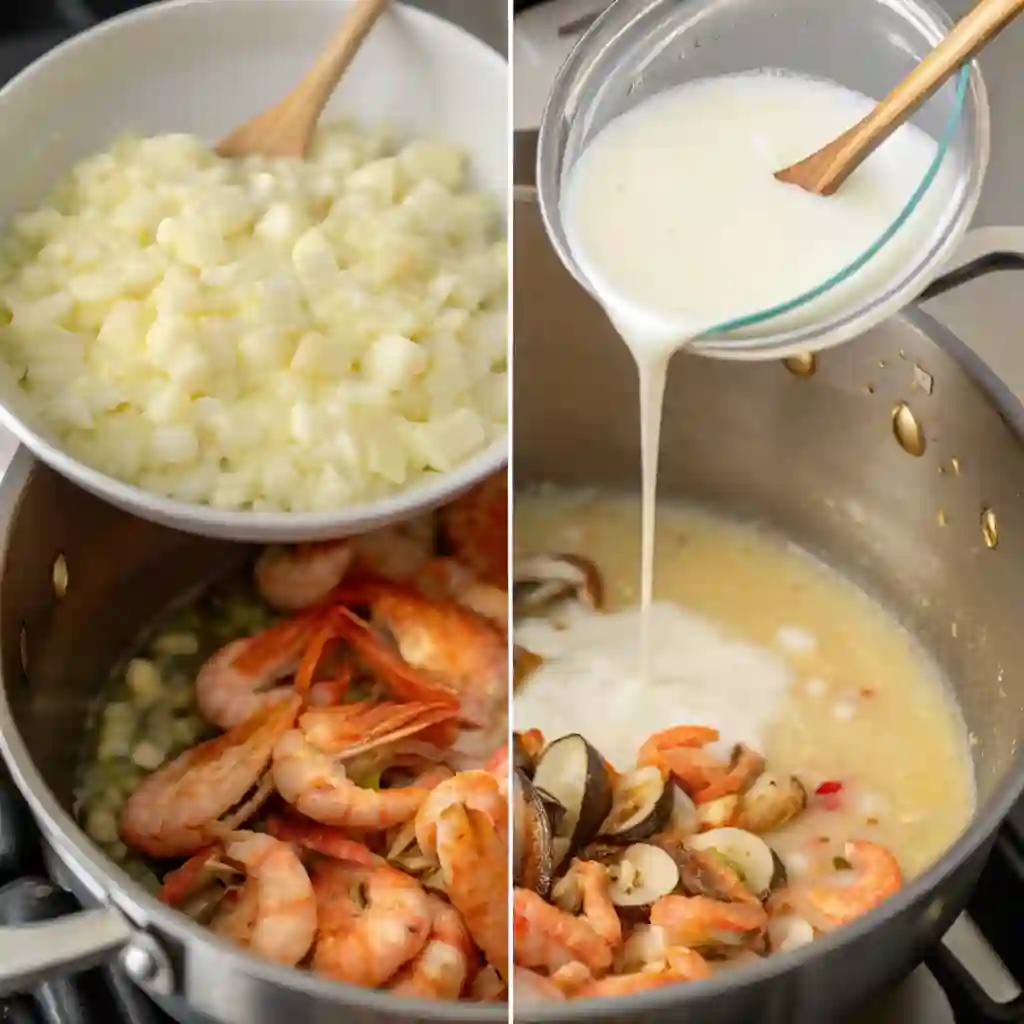
When preparing seafood chowder, achieving the perfect balance of flavors and textures is essential. Here are some handy tips to make your chowder the ultimate comfort food.
Tip 1: Use Fresh Seafood for the Best Taste
For the best seafood chowder experience, always opt for fresh seafood. Fresh scallops, shrimp, and fish like cod and haddock will bring out the natural sweetness in the chowder. If fresh seafood isn’t available, frozen varieties can still work, but the texture might be a bit different.
Tip 2: Cook the Seafood Just Right
One of the key mistakes many people make when cooking seafood chowder is overcooking the seafood. Scallops, shrimp, and fish can become rubbery if left in the pot for too long. Be sure to cook them just until they are opaque or pink, depending on the type.
Tip 3: Get Creative with the Base
While a creamy base is typical for seafood chowder, don’t be afraid to get creative. Try adding a splash of white wine, or experiment with seasonings like smoked paprika or Old Bay seasoning to give your chowder a unique twist.
How to Make Your Seafood Chowder Healthier
While seafood chowder is already packed with nutritious ingredients, there are a few easy tweaks you can make to enhance its health benefits.
Swap Cream for Milk or Half-and-Half
If you want to reduce the richness of your seafood chowder without compromising flavor, try substituting heavy cream with whole milk or half-and-half. This will give you a lighter version of the chowder while still maintaining its creamy consistency.
Add Extra Vegetables
To make your seafood chowder more filling and nutritious, consider adding more vegetables. Leeks, celery, or carrots are great additions. The extra fiber will make the soup heartier and boost its health benefits.
Use Leaner Protein Sources
Another way to make your chowder healthier is by opting for leaner proteins. Instead of bacon, you can use diced turkey or even lean ham for a lighter option without sacrificing too much flavor.
Common Mistakes to Avoid When Making Seafood Chowder
Making seafood chowder seems simple, but there are several common mistakes that can affect the flavor and texture of your soup. To help you achieve the perfect chowder, here are a few mistakes you should avoid.
Mistake 1: Overcooking the Seafood
As mentioned earlier, overcooking seafood is one of the biggest pitfalls when making seafood chowder. Seafood cooks quickly, so always add it at the right time. Shrimp and scallops should be added towards the end of the cooking process, just enough to cook them through. This will ensure they stay tender and juicy.
Mistake 2: Not Balancing the Flavor
A seafood chowder should have a balanced flavor profile, with just the right amount of salt and seasoning. Adding too much salt early in the cooking process can result in a soup that is overly salty. Instead, season gradually and taste frequently. You can always add more seasoning, but it’s harder to fix an overly salty soup.
Mistake 3: Skipping the Roux
For a rich and creamy base, it’s important to create a roux (a flour and butter mixture) before adding the broth. This step thickens the chowder and gives it that signature creamy consistency. Skipping the roux can result in a thinner, less satisfying chowder. Always make sure to cook the roux for a few minutes to develop its flavor.
Serving Suggestions for Seafood Chowder Recipe
The best seafood chowder deserves to be served with a few delicious accompaniments. Here are some ideas to elevate your meal and enhance the dining experience.
Serve with Crusty Bread
There’s nothing like a warm bowl of seafood chowder paired with a slice of crusty bread. The bread is perfect for dipping and soaking up the rich, creamy broth. You can go for a classic baguette or choose a more rustic sourdough for added flavor.
Add a Side Salad for Balance
To make the meal more well-rounded, serve your seafood chowder with a light side salad. A fresh green salad with a tangy vinaigrette can provide a refreshing contrast to the creamy, rich chowder. This balance will leave your guests satisfied but not overly full.
Garnish with Fresh Herbs
A simple garnish can take your seafood chowder to the next level. Sprinkle some fresh parsley or chives on top for a burst of color and added flavor. You can also add a squeeze of lemon for a touch of acidity, which will brighten the dish and balance the richness of the chowder.
Variations of Seafood Chowder Recipe
While a classic seafood chowder is always delicious, there are several variations you can try to spice up the recipe. Depending on your taste preferences and the ingredients available, here are a few ways you can mix it up.
1. Adding Different Seafood Types
You don’t have to limit yourself to shrimp and scallops when making seafood chowder. You can include a variety of seafood such as clams, mussels, crab, or even lobster. Each type of seafood adds its own unique flavor and texture to the chowder. For a more indulgent version, you can combine several types of seafood to create a rich and luxurious chowder.
2. Incorporating Vegetables
Although potatoes are the typical vegetable used in seafood chowder, you can experiment with other vegetables. Leeks, celery, carrots, and corn are excellent additions that not only add color but also boost the flavor. If you prefer a chunkier chowder, dice the vegetables into larger pieces, or purée them for a smoother texture.
3. Spicy Seafood Chowder Recipe
If you love a bit of heat, consider adding some spice to your seafood chowder. A pinch of cayenne pepper, a splash of hot sauce, or a sprinkle of chili flakes can bring a whole new dimension to the flavor. You can also experiment with spices like paprika or smoked paprika for a smoky kick. Just be sure to balance the heat with the creamy broth to avoid overwhelming the delicate seafood flavors.
How to Store and Reheat Your Leftovers
Seafood chowder is not only delicious when freshly made, but it also stores well for future meals. Here’s how you can store and reheat it while maintaining its flavor and texture.
1. Storing Leftover Seafood Chowder
If you have leftover seafood chowder, allow it to cool to room temperature before transferring it into an airtight container. You can store it in the refrigerator for up to 2-3 days. For longer storage, freeze the chowder for up to 3 months. However, note that freezing may cause the seafood to become a little more rubbery when reheated.
2. Reheating Seafood Chowder
To reheat your seafood chowder, it’s best to do so gently to avoid overcooking the seafood. You can reheat it in a pot over low to medium heat, stirring occasionally. If the chowder has thickened too much after refrigeration, add a splash of milk or broth to thin it out. For an even quicker option, you can microwave the chowder in intervals, stirring between each. Just be sure not to overheat it to keep the seafood tender and fresh.
Your Questions, Answered
When it comes to seafood chowder, both seasoned cooks and beginners often have some common questions. To help you perfect your chowder every time, we’ve answered some of the most frequently asked questions.
1. Can I Use Frozen Seafood for Seafood Chowder Recipe?
Yes! Frozen seafood works just as well as fresh seafood in seafood chowder. In fact, it’s often more convenient and cost-effective. Just make sure to thaw the seafood properly before adding it to the chowder, and avoid overcooking it. Overcooking seafood can lead to a rubbery texture, so be sure to add it towards the end of cooking and let it simmer gently.
2. What is the Best Type of Seafood for Chowder?
While the most popular seafood choices for seafood chowder are shrimp, clams, and scallops, you can also use crab, lobster, and white fish like cod or haddock. The key is to select seafood that holds up well during cooking. Delicate seafood like lobster and crab can be added near the end to prevent overcooking, while heartier options like cod can be added earlier in the cooking process.
3. Can I Make Seafood Chowder Dairy-Free?
Yes, it’s possible to make a dairy-free seafood chowder. Instead of using cream or milk, you can opt for coconut milk or a dairy-free cream alternative. For a thicker consistency, try blending some of the vegetables into a smooth base. The result is a rich, creamy soup that still feels indulgent but is suitable for those with dairy sensitivities.
4. Can I Make Seafood Chowder in a Slow Cooker?
Absolutely! Making seafood chowder in a slow cooker is a great way to save time and let the flavors develop. Simply combine all the ingredients (except for the seafood) in the slow cooker and cook on low for 4-6 hours. Add the seafood in the last 30 minutes of cooking to prevent it from becoming overcooked. This method allows you to enjoy a delicious chowder with minimal effort.
5. How Can I Make My Seafood Chowder Thicker?
If you prefer a thicker seafood chowder, there are several tricks you can use. One option is to blend some of the potatoes or vegetables into a puree and stir it back into the soup. Alternatively, you can make a roux (flour and butter mixture) or use cornstarch to thicken the broth. Just be sure to add a little at a time to avoid making the chowder too thick.
6. What Can I Serve with Seafood Chowder Recipe?
Seafood chowder is filling on its own, but you can serve it alongside a variety of sides to make it even more satisfying. Some great options include crusty bread, a light salad, or even crackers. For a more indulgent touch, serve with a side of garlic bread or a cheesy biscuit. You can also add a squeeze of lemon juice or a sprinkle of fresh herbs like parsley or dill for added flavor.

